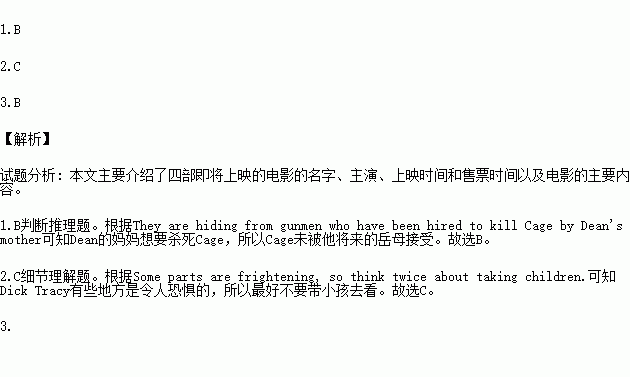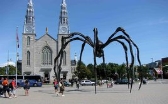题目内容
H.T.B. Arts Center
FILM Tickets £2.50 / £ 1.50. Performances at 8 pm unless started otherwise.
WILD AT HEART 127mins.
Wen 6-Fri8 February
Director: David Lynch
Starring: Nicholas Cage, Laura Dern, Willam Dafoe. A first-class film. Cage and his girlfriend Dean are on the run through the dangerous Deep South. They are hiding from gunmen who have been hired to kill Cage by Dean's mother. Victims, yes—but they also have fun. It's wild at heart, strange on top. Funny, frightening and brilliant.
DICK TRACY 113mins
Mon 11-Sat16 February 6pm
Tickets on sale 5-6 pm
Director: Warren Beatty
Starring: Warren Beatty , Madonna The famous detective tries to stop Big Boy and the Blank from taking over the city. A colorful and exciting film. Some parts are frightening, so think twice about taking children.
BATMAN 126mins
Mon11-Sat16 February 8.30pm
Tickets on sale 7.30-8.30pm
PIZZA PLUS offer 6-7pm
Director: Tim Burton
Starring: Michael Keaton, Jack Nicholson. A few essential questions must be asked...Is Batman a mad hero? Why does Bruce Wayne spend millions dressing up as a bat? Has Nicholson's Joker stolen the whole movie? Great action and excellent acting, especially by Nicholson.
1.We know from Wild at Heart that
A. Wild at Heart is funny rather than frightening
B. Cage was not accepted by his future mother-in-law.
C. A famous detective happened to help Cage and Dean.
D. Cage and Dean are playing the hide-and-seek game with Dean’s mother.
2.According to the text, we can learn that _____.
A. Batman has the longest running time
B. One can buy tickets in advance for all the films
C. You’d better not take your children with you to see Dick Tracy
D. While watching Batman one can enjoy pizza at 7:30 pm.
3.Where can we most probably read this text?
A. In a movie review.
B. In an ad page.
C. In a short story.
D. In an introduction of an art center.
 优学名师名题系列答案
优学名师名题系列答案




